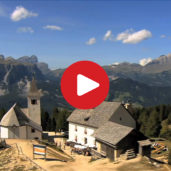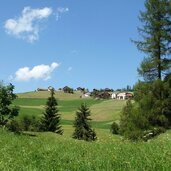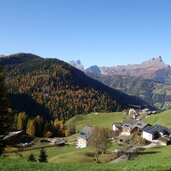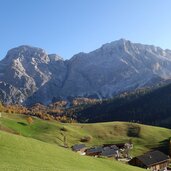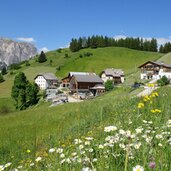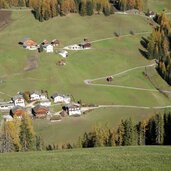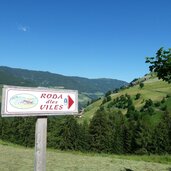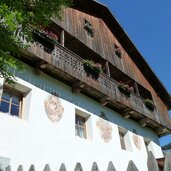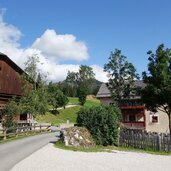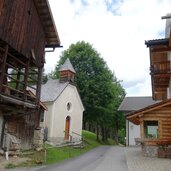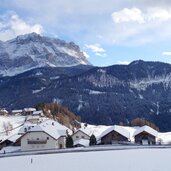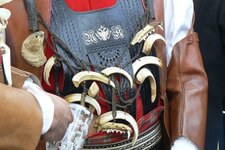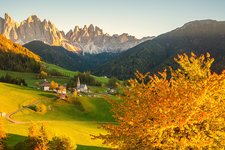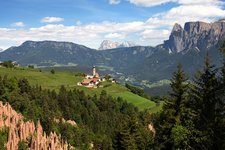The typical residential settlements consist of a few farms built on the partly very steep slopes of the Val Badia valley
Image gallery: Viles in Val Badia
One of the architectural features of the Val Badia valley are its small rural settlements on the slopes, which shape the landscape. Especially around Longiarù, Marebbe and La Valle in the back part of the Val Badia valley, called Alta Badia, you can find the scattered hamlets, locally called "Les Viles". The individual farms were built of stone and wood, modelled on the Rhaetian tambra, the original form of an alpine hut. These mergers had several reasons: Economic land, which was not so common between the barren highlands and the forest, was better used, survival was easier in a group than alone, and the valley floor was not cultivated until the 15th century.
The Viles, consisting of three to 10 courtyards between 1,200 and 1,700 m a.s.l., arranged in a circle or semicircle, are therefore among the oldest buildings in the valley. Each family owned a "ciasa" (house) and a "majun" (stable) with the "tablé" (hayloft). The barn, well, oven, chapel and paths were and are used in common. Today, trees and streams line the paths leading to the Viles, and all around there are steep meadows, majestic peaks and dense forests.
And how can they be reached? The "Roda dles Viles", for example, a beautiful circular hike, starts in Longiarù near San Martino in Badia and leads in about 3 hours through woods and pastures to the traditional Viles. Also the hike to the Longiarù Mills in the Val di Morins leads past two Viles.
Contact info
- "Roda dles Viles" circular path - 39030 - San Martino in Badia / St. Martin in Thurn
- +39 0474 523175
- info@sanvigilio.com
Opening times
settlements visible only from the outside
circular path freely accessible

